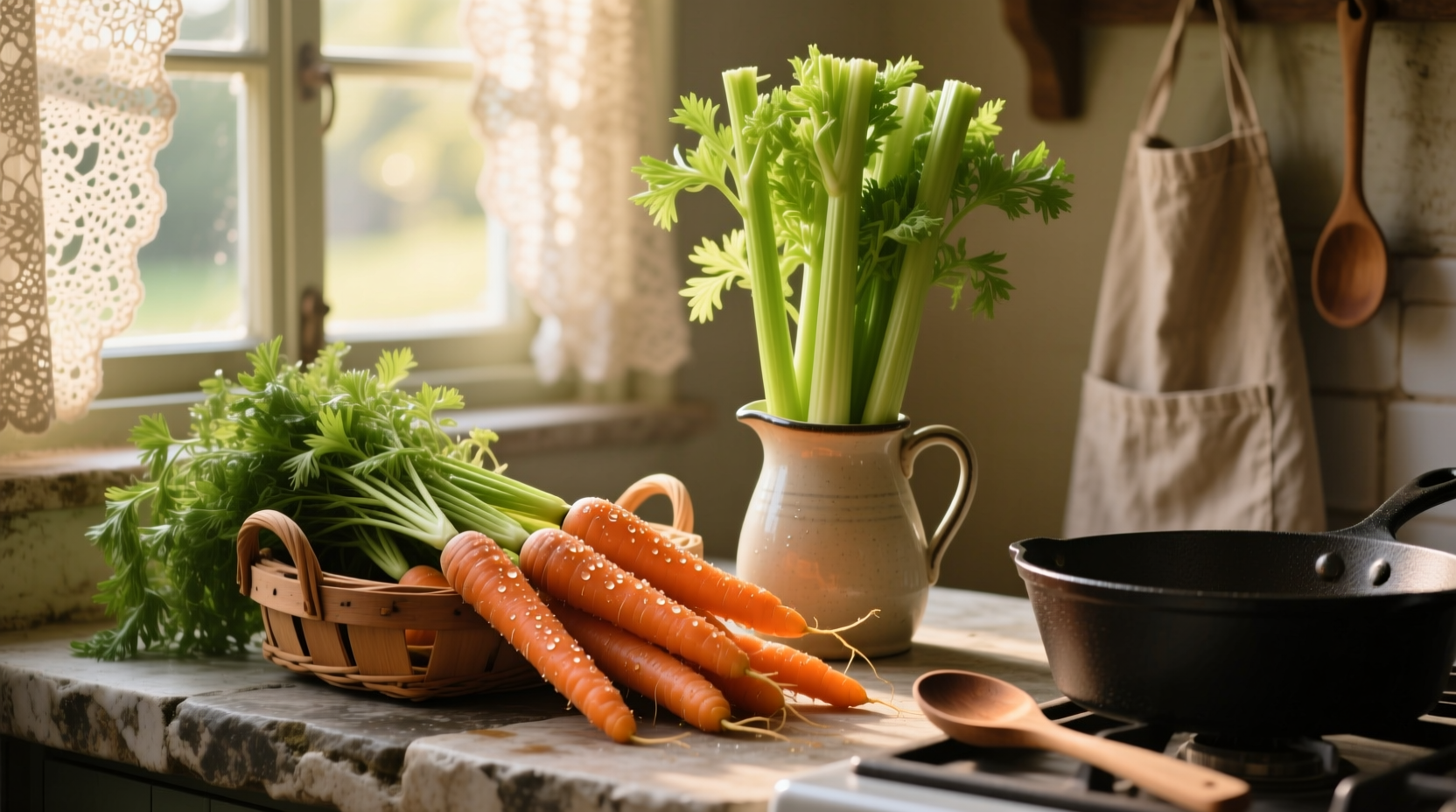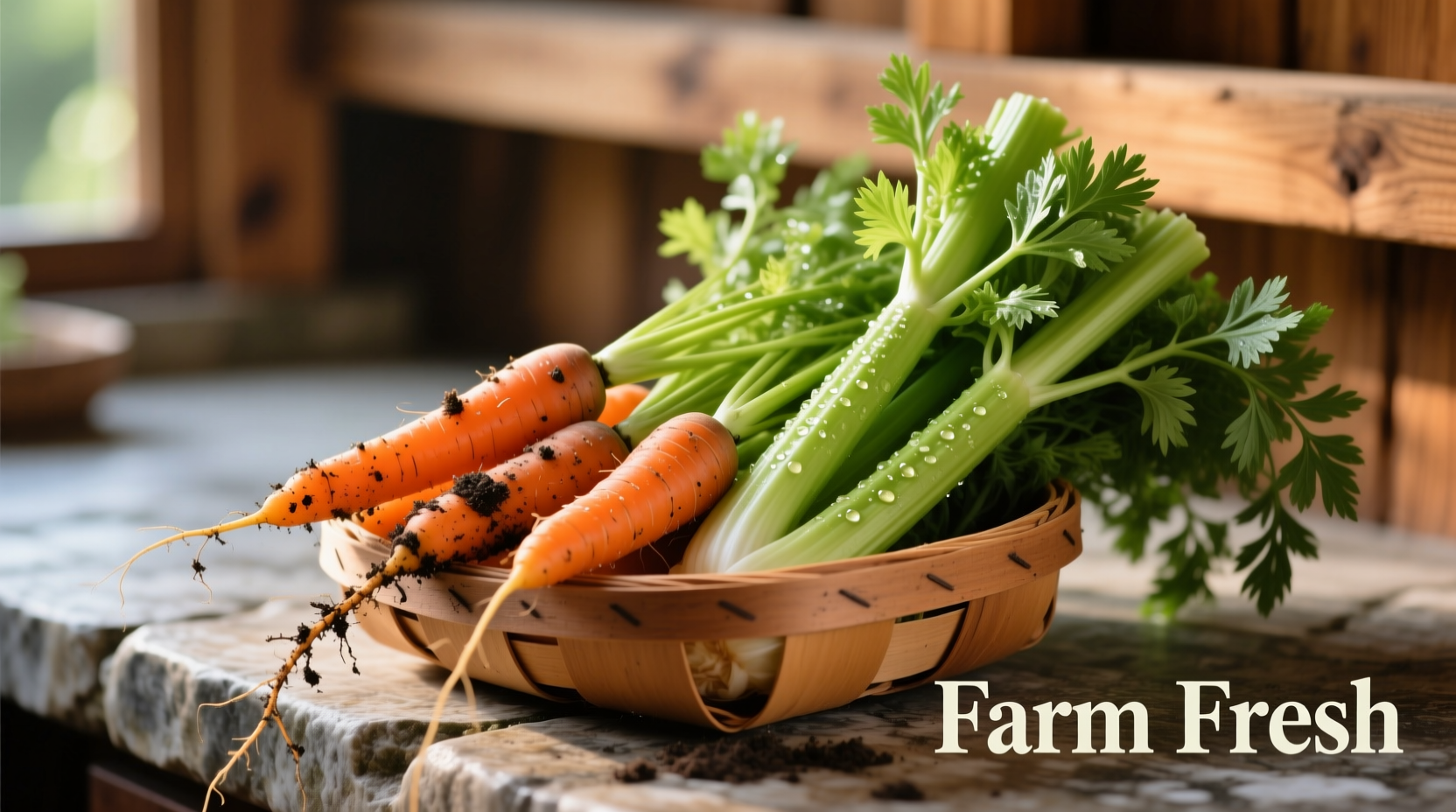Why This Dynamic Duo Belongs in Your Kitchen
When you combine carrots and celery in your meals, you're tapping into a centuries-old culinary tradition with science-backed health advantages. These vegetables aren't just kitchen staples—they're nutritional powerhouses that work better together than separately. Let's explore exactly how to maximize their potential in your daily eating habits.
Nutritional Powerhouse Comparison
Understanding the distinct nutritional profiles helps you leverage each vegetable's strengths. While both are low-calorie options, their nutrient compositions serve different physiological purposes.
| Nutrient | Carrots (1 cup, chopped) | Celery (1 cup, chopped) |
|---|---|---|
| Calories | 52 | 16 |
| Vitamin A | 210% DV | 2% DV |
| Vitamin K | 16% DV | 37% DV |
| Potassium | 12% DV | 9% DV |
| Fiber | 3.6g | 1.6g |
| Water Content | 88% | 95% |
This nutritional contrast explains why professional chefs always pair them—they balance each other's limitations. According to USDA FoodData Central, carrots compensate for celery's low vitamin A content while celery provides hydration that carrots lack. This complementary relationship makes them ideal for creating nutritionally complete dishes without additional ingredients.
Science-Backed Health Benefits You Can't Ignore
Research published in the Journal of Agricultural and Food Chemistry confirms that the carotenoids in carrots demonstrate significant antioxidant activity, particularly when cooked. Meanwhile, celery's unique compound apigenin shows promising anti-inflammatory effects according to a 2022 review in Nutrients.
For cardiovascular health, the potassium content in both vegetables helps regulate blood pressure. The FDA recognizes diets rich in potassium and low in sodium as important for maintaining healthy blood pressure levels. When consumed together, their combined potassium content provides approximately 20% of your daily requirement.
Optimal Storage Techniques for Maximum Freshness
Proper storage dramatically extends shelf life and preserves nutritional value. The University of California Davis Postharvest Technology Center recommends:
- Carrots: Store in perforated plastic bags in the crisper drawer (0-4°C/32-39°F) for up to 4 weeks. Remove green tops immediately as they draw moisture from roots.
- Celery: Wrap tightly in aluminum foil and store upright in the refrigerator. This method maintains crispness for 3-4 weeks compared to just 7-10 days with standard storage.
Never wash either vegetable before storage—excess moisture accelerates spoilage. The National Center for Home Food Preservation confirms that unwashed vegetables maintain quality significantly longer than pre-washed counterparts.

Culinary Applications That Transform Ordinary Meals
The classic mirepoix (carrots, celery, and onions) forms the flavor foundation for French cuisine and countless global dishes. But modern applications go far beyond soup bases:
Everyday Cooking Hacks
- Raw power boost: Slice both thinly for salads—carrots provide sweetness while celery adds crunch without overpowering other ingredients
- Smoothie secret: Blend cooked carrots with celery for creamy texture without dairy (1:2 ratio works best)
- Stock enhancement: Add both to vegetable or meat stocks—their natural sugars caramelize during simmering, creating complex flavor layers
Professional Technique: Flavor Layering Timeline
Understanding when to add each vegetable during cooking maximizes flavor development:
- 0-5 minutes: Sauté celery first—it requires longer to develop sweetness without burning
- 5-8 minutes: Add carrots—they contain more natural sugars that caramelize quickly
- 8-12 minutes: Continue cooking until vegetables become translucent but not browned
- 12+ minutes: Add liquid to create steam that softens vegetables while preserving nutrients
This precise timing sequence, documented by the James Beard Foundation's culinary research, ensures optimal flavor extraction while maintaining nutritional integrity.
Common Mistakes That Waste Their Potential
Even experienced cooks make these critical errors that diminish nutritional value and flavor:
- Overcooking both vegetables together: Celery breaks down faster than carrots—add them at different times
- Peeling carrots unnecessarily: Most nutrients concentrate just under the skin—scrub instead of peel
- Storing cut vegetables at room temperature: Refrigerate within 2 hours to prevent nutrient degradation
- Discarding celery leaves: They contain twice the vitamin C of stalks—use as fresh herb
The FDA's Food Code specifies that cut vegetables left at room temperature for more than 2 hours enter the temperature danger zone where bacteria multiply rapidly. This not only affects safety but also degrades heat-sensitive nutrients like vitamin C.
Simple Recipe Framework for Daily Use
Try this adaptable template that works for lunches, dinners, or meal prep:
- Sauté 1 diced celery stalk and 1 diced carrot in 1 tsp olive oil for 8 minutes
- Add 2 cups broth and your protein of choice (chicken, tofu, or beans)
- Simmer 15 minutes until vegetables are tender-crisp
- Finish with fresh herbs and a squeeze of lemon
This basic formula delivers 12g fiber, 200% vitamin A, and 40% vitamin K in under 300 calories. Registered dietitians at the Academy of Nutrition and Dietetics recommend this approach for maximizing vegetable consumption without excessive preparation time.











 浙公网安备
33010002000092号
浙公网安备
33010002000092号 浙B2-20120091-4
浙B2-20120091-4